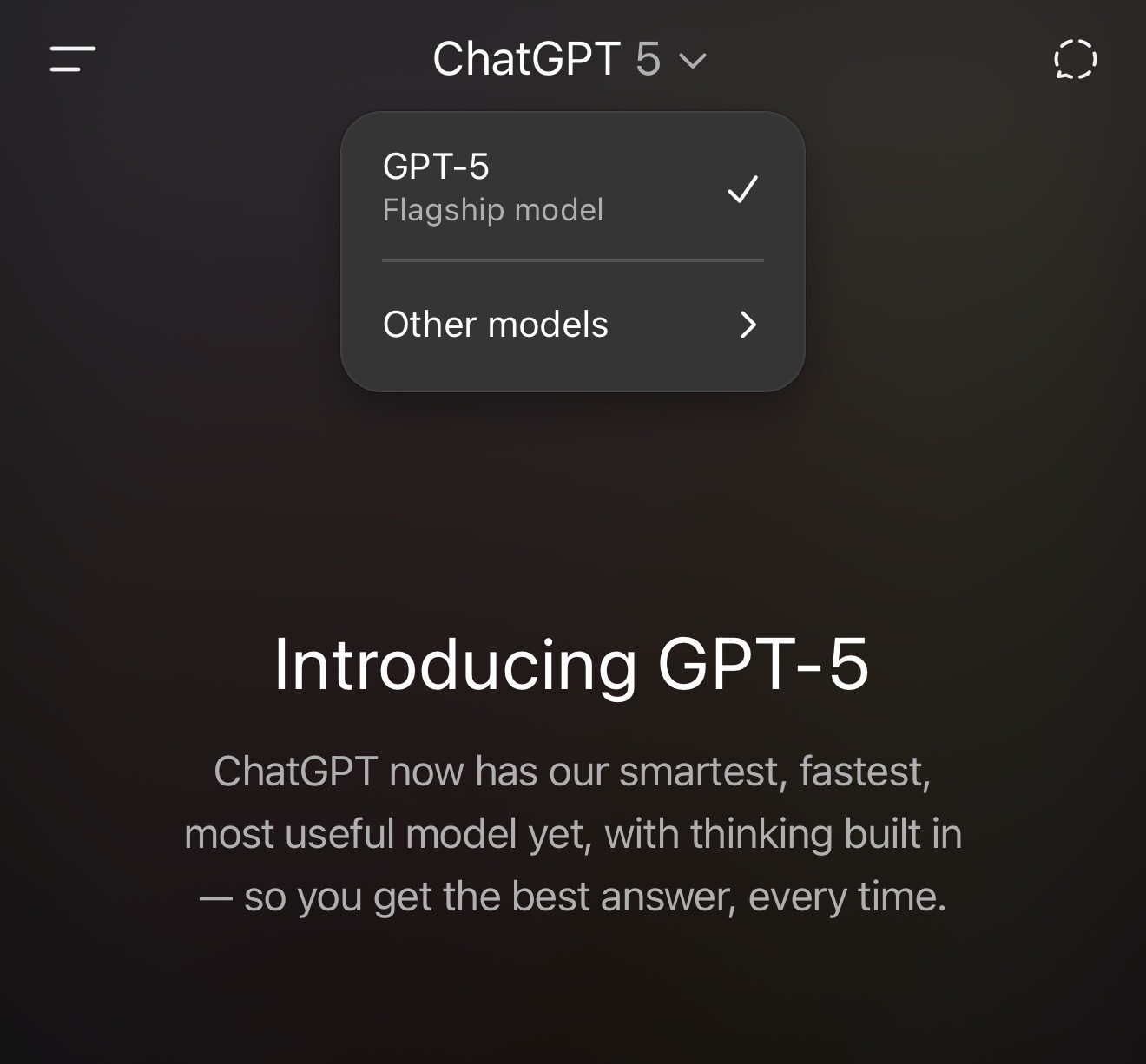OpenAI Launches ChatGPT-5 — And Retires All Other GPT Models
Today marks a big milestone in OpenAI’s history: ChatGPT-5 is here, and with it, every other GPT model in ChatGPT has been retired. If you open the app or web version right now, you’re already using it.

One phrase from the launch stood out to me — “software on demand”. The idea that AI can create software that never existed before, in moments, to help you learn or achieve something, is the stuff of sci-fi dreams. Now, it’s on the roadmap for reality. That’s exciting.
What’s New in GPT-5
This isn’t just a speed bump over GPT-4o — it’s a full platform refresh. OpenAI has rolled everything into one unified model, while adding capabilities for both everyday users and developers.
Overall improvements:
- Better context handling in voice — more natural, less robotic.
- Improved instruction-following — fewer misunderstandings.
- Safer completions — it aims to answer carefully rather than outright refuse.
- “Vibe coding” — more fluid generation of code with style and structure.
- Reduced hallucinations — performs better in benchmarks over long contexts.
- One model to rule them all — no more switching between GPT-4o, o3, etc.
For developers:
- Three sizes — GPT-5, GPT-5 Mini, GPT-5 Nano.
- Adjustable “reasoning effort” parameter.
- More reliable custom tools and tool preambles.
- Greater control over verbosity.
- Better handling of multi-step tool calls and errors.
Usage Limits and Tiers
- Free tier: 10 messages every 5 hours on GPT-5. After that, auto-switch to GPT-5 Mini. One GPT-5 Thinking message per day.
- Plus: 80 messages every 3 hours on GPT-5, then Mini.
Plus users can manually select GPT-5 Thinking (up to 200 messages/week). - Team/Pro: Unlimited GPT-5 (with abuse guardrails).
Unless you’re sending a message every couple of minutes, you won’t hit the Plus limit. Even when you do, GPT-5 Mini is still more capable than previous free models, so this is a genuine upgrade.
Key Capabilities That Stand Out
- Unified system — GPT-5 can switch between fast mode and deep reasoning without you needing to change models.
- Free access for all — everyone gets GPT-5 (with limits), then drops to Mini for continuity.
- Massive hallucination reduction — especially useful in research and technical work.
- Full app/game generation — create polished apps or games from a single prompt.
- Custom personalities — Cynic, Robot, Listener, Nerd, or your own.
- Personalisation — set accent colours, choose tone/detail.
- Advanced voice mode — human-like speech, adjustable style.
- Google Workspace integration — Gmail/Calendar summarisation, scheduling, drafting.
- Study and learning modes — step-by-step teaching.
- Developer upgrades — better tool use, error handling, multi-call flows.
- Safety — red-teaming, high-level safe answers to risky queries.
The Rollout
- Global from day one — August 7, 2025.
- All older GPT models removed from ChatGPT.
- GPT-5 now powers everything in the app.
Third-Party Adoption Was Instant
The speed at which GPT-5 appeared in other products says a lot about integration ease:
- Cursor — coding with GPT-5.
- Perplexity — selectable model.
- Microsoft Copilot — “Smart Mode” is GPT-5.
- Lovable — larger, faster app builds.
- Notion — upgraded AI features.
- GitHub Copilot — enhanced completions.
When companies can switch over in hours, it shows how tightly this model can drop into existing workflows.
Why “Software on Demand” Might Be the Real Story
While benchmark wins and reduced hallucinations are important, the on-demand software generation idea feels like the big leap here. Imagine:
- Need a learning tool? It can spin up an app tailored to your topic and skill level.
- Struggling with a process? It can build a workflow tool just for you.
- Stuck in a coding project? It can scaffold, debug, and style your entire project instantly.
We’ve had hints of this before, but GPT-5’s unified architecture and better reasoning make it feel like we’re edging closer to those “Star Trek computer” moments.
Final Thoughts
GPT-5 is faster, smarter, and more reliable — but it’s also more accessible. Everyone gets to use it, and the guardrails feel balanced rather than restrictive. The fact that third-party apps adopted it within hours shows it’s going to become the default AI experience across tools very quickly.
The real question now is how quickly “software on demand” moves from a demo to something we start using in daily work and learning. If OpenAI delivers on that promise, the next wave of AI might not just answer questions — it might build the tools we didn’t know we needed.